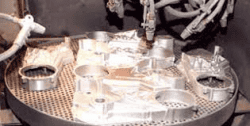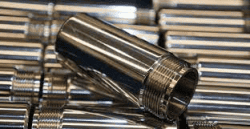Selecting the right plating process for your product is essential for the overall look and functionality of your product. Adding plated finishes can increase the aesthetic appeal of your product, while improving its physical and chemical properties. It is important to choose a plating process that is simple, yet effective. To get the best results, work with an experienced plating company. Here are some considerations for choosing the best plating process:
Choosing the right electroplating process for your product involves knowing the characteristics of the metal to be plated. Different metals require different levels of voltage and immersion time. The higher the voltage, the thicker the plated finish. The longer the immersion time, the more layers are formed. Ensure the plating process is performed with high-quality equipment to ensure that the product will look its best.
Cleaning is an important part of the electroplating process. Some base materials only need one cleaning, while others may require several. A thorough rinse in distilled water will remove any chemical cleaners from the substrate. The choice of electroplating process depends on the part’s requirements and the level of cleanliness. For example, certain plating techniques require cleaning of bulk soil, oil, grease, and dirt. The best way to prepare a substrate for a certain plating process is to consult a professional who specialises in that type of finish. Alternatively, consider the benefits of Electroless Nickel Plating and find out more at https://www.poeton.co.uk/standard-treatments/electroless-nickel-plating/
The first step of the plating process is pretreatment. Pretreating the substrate removes harmful substances like greases, oils, and other materials that can interfere with the plating process. These contaminants can prevent a uniform disposition of the product. The prep process may include several sub-steps, including cleaning, rising, and other pretreatments. It is crucial that you understand the different plating processes available and choose the best one for your product.
Plating copper with gold or silver is beneficial for applications that require high conductivity. Copper is also a good conductor of heat and electricity. Because of its high electrical conductivity, gold plating is ideal for electronic components. It also offers superior adhesion. Silver is the most expensive option for electroplating, but is the best choice for products with high aesthetic value. You can choose from several plating processes for copper and silver-plated parts, depending on your needs.
Metallizing your products can enhance their aesthetic appeal. Metal finishing processes can also improve their functionality, including corrosion resistance and heat resistance. Different companies offer different types of plating services, including nickel chrome plating and electroless nickel plating. Electroless plating is slower than electroplating, but results in a more uniform coating. A metal finish that is consistent across a product is an important attribute for a high-end product.


